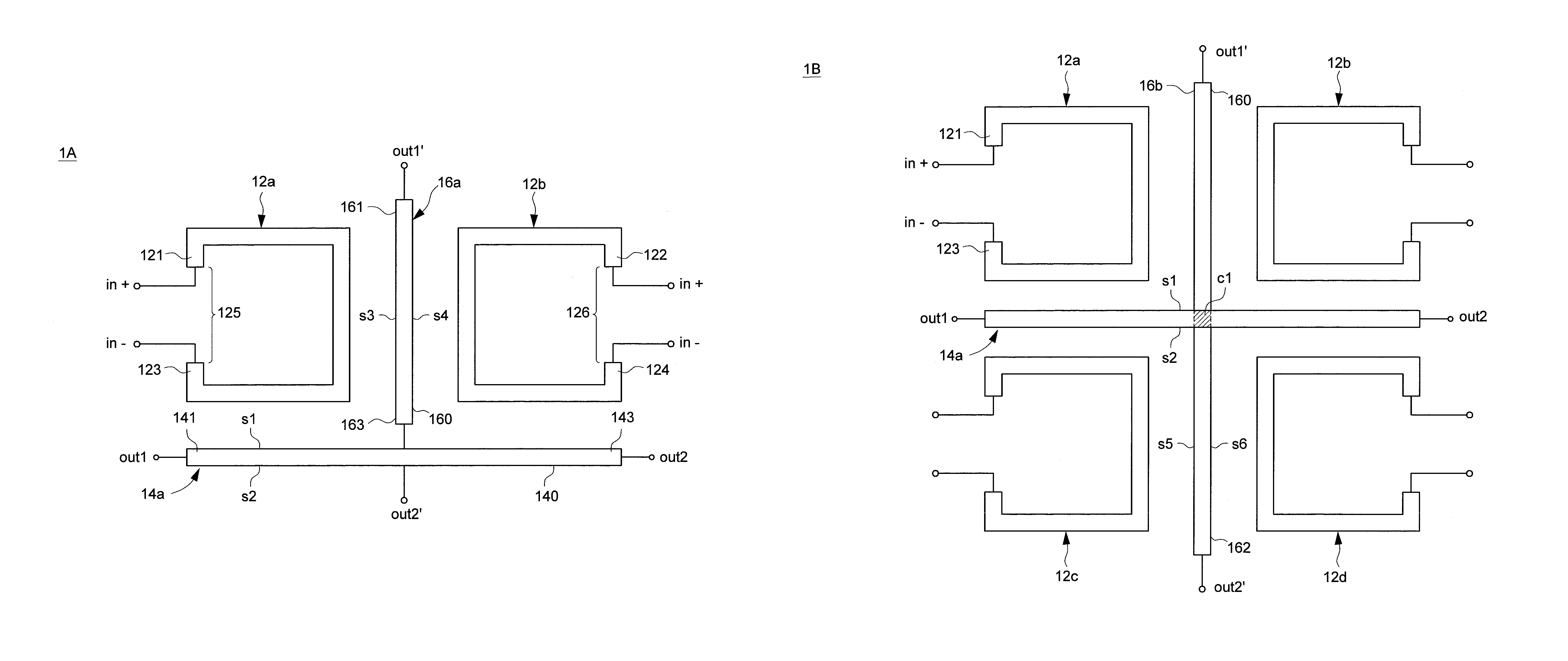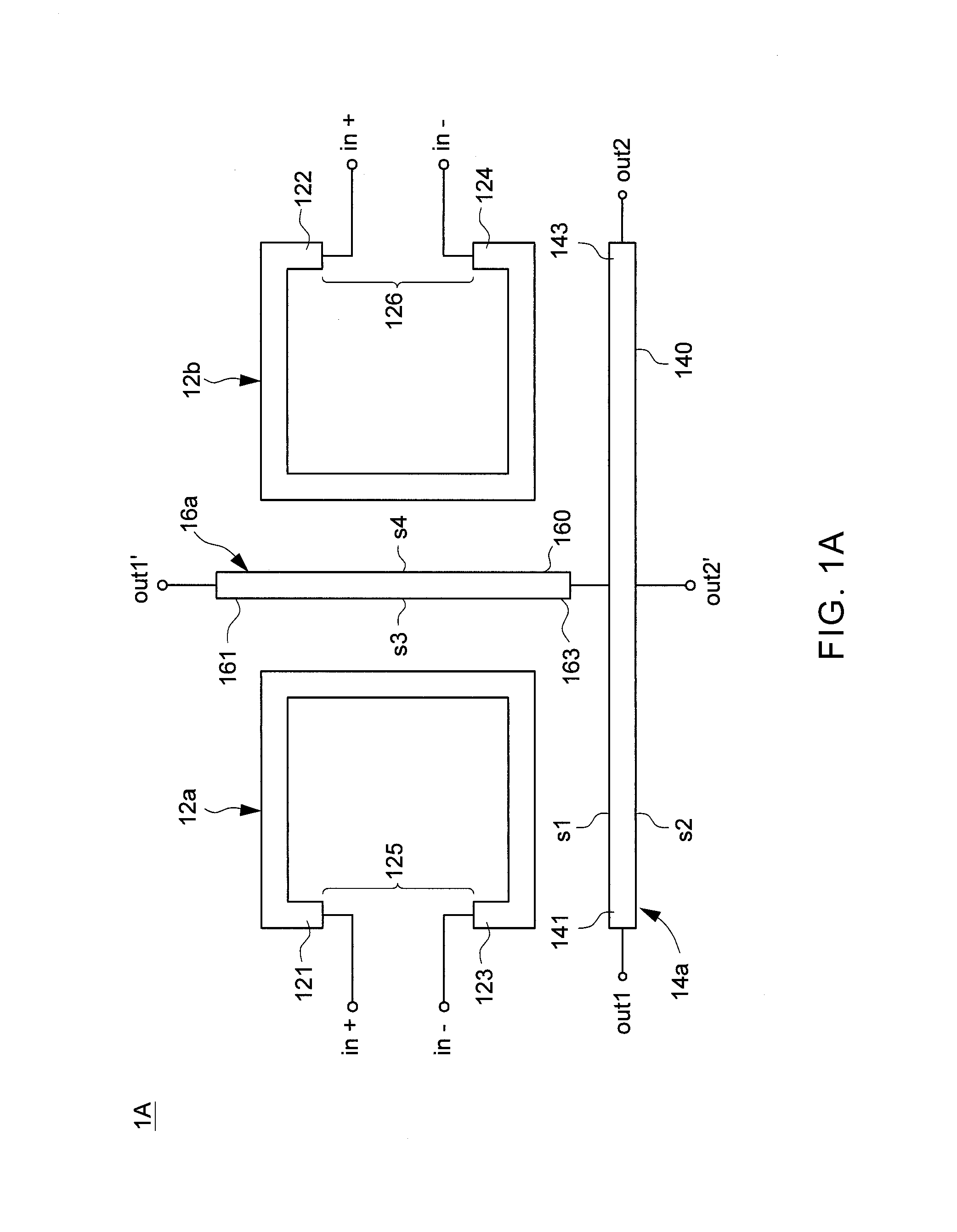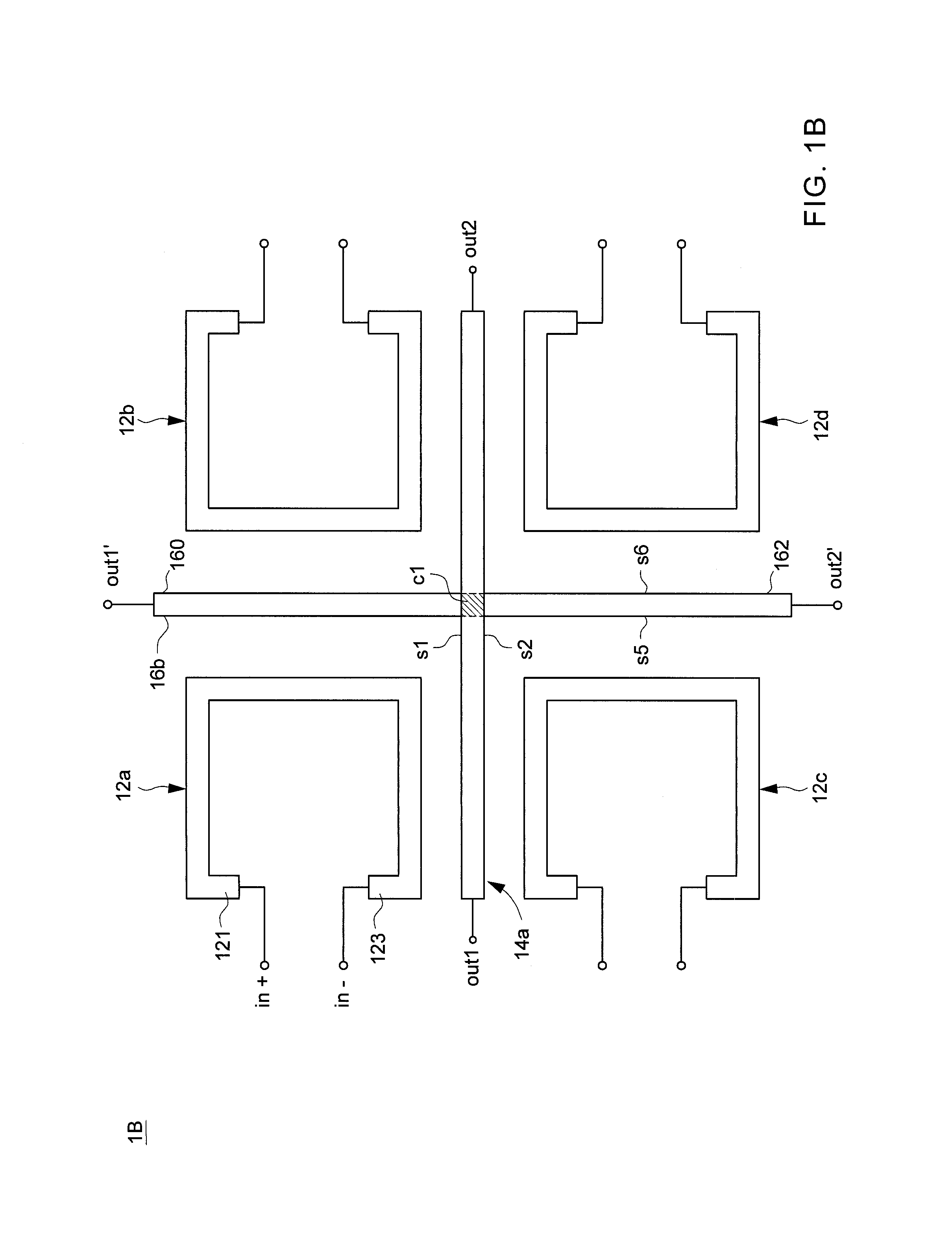Transformer hybrid
- Summary
- Abstract
- Description
- Claims
- Application Information
AI Technical Summary
Benefits of technology
Problems solved by technology
Method used
Image
Examples
first embodiment
[0020]FIG. 1A depicts a schematic diagram illustrating a transformer hybrid, in accordance with the present disclosure. The transformer hybrid 1A may comprise a substrate (not shown), a first conductor 14a, a second conductor 16a, a first coil 12a, and a second coil 12b. The first conductor 14a, the second conductor 16a, the first coil 12a, and the second coil 12b are formed in the same layer or different layers on the substrate by using the semiconductor process. In other words, the first conductor 14a, the second conductor 16a, the first coil 12a, and the second coil 12b may have different level heights on the substrate. In an embodiment, the substrate may be a ceramic substrate, a silicon substrate or a printed circuit board. In an alternative embodiment, the first conductor 14a, the second conductor 16a, the first coil 12a, and the second coil 12b may be suspended on the substrate by the RFMEMS transformer fabrication process.
[0021]The first coil 12a and the second coil 12b may ...
third embodiment
[0035]Alternatively, the transformer hybrid, in accordance with the present disclosure can make a little change. As shown in FIG. 1D, the second conductor 16a can stretch in the horizontal direction from both ends. That is, the second conductor 16a consisted three portions of a vertical part 161, and a first horizontal part 162 and a second horizontal part 163. Those two horizontal parts 162, 163 are parallel located between the coils 12a, 12b and second output terminal 143, first output terminal 143, respectively.
[0036]Alternatively, the transformer hybrid, in accordance with the third embodiment of the present disclosure can make a little more change. As shown in FIG. 1E, the second conductor 16a can stretch further in the vertical direction from both ends. That is, the second conductor 16a consisted five portions of a first vertical parts 161, a second vertical parts 164, a third vertical parts 165, a first horizontal part 162 and a second horizontal part 163. Those two horizonta...
fourth embodiment
[0037]FIG. 2 depicts a schematic diagram illustrating a transformer hybrid, in accordance with the present disclosure. The transformer hybrid 2 comprises a substrate (not shown), a circular conductor 24, a 8-shape conductor 26, a first coil 22a, and a second coil 22b. The circular conductor 24, the 8-shape conductor 26, the first coil 22a, and the second coil 22b are formed in the same layer or different layers on the substrate by using the semiconductor process. In other words, the circular conductor 24, the 8-shape conductor 26, the first coil 22a, and the second coil 22b may have different level heights on the substrate.
[0038]In an embodiment, the circular conductor 24 comprises a first output terminal 241 and a second output terminal 243. The first output terminal 241 and the second output terminal 243 are spaced apart and opposite with each other or face with each other to form a first opening 245. The 8-shape conductor 26 is disposed on the substrate and surrounded with the ci...
PUM
 Login to View More
Login to View More Abstract
Description
Claims
Application Information
 Login to View More
Login to View More - R&D
- Intellectual Property
- Life Sciences
- Materials
- Tech Scout
- Unparalleled Data Quality
- Higher Quality Content
- 60% Fewer Hallucinations
Browse by: Latest US Patents, China's latest patents, Technical Efficacy Thesaurus, Application Domain, Technology Topic, Popular Technical Reports.
© 2025 PatSnap. All rights reserved.Legal|Privacy policy|Modern Slavery Act Transparency Statement|Sitemap|About US| Contact US: help@patsnap.com



